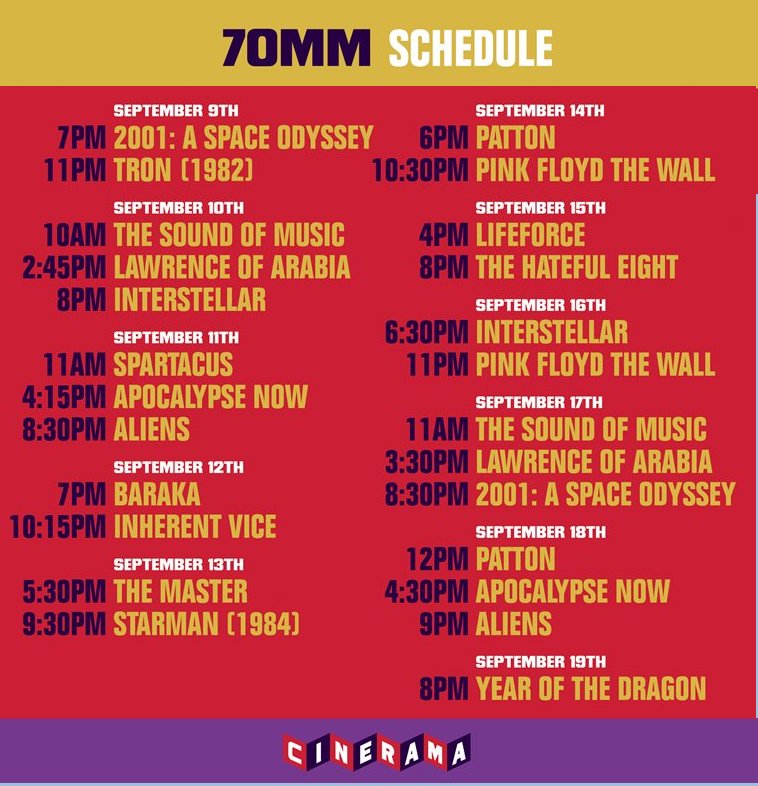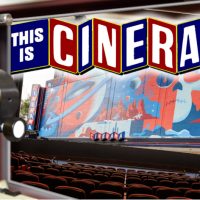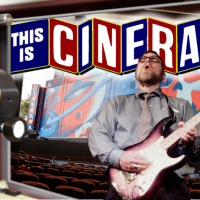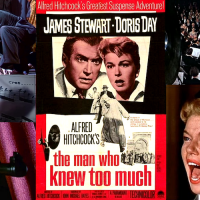
On September 9, the Seattle Cinerama began its 70mm Film Festival for 2016, which runs through September 19. (Selections and end date subject to change without notice; visit the Facebook 70mm event page for updates.) This is a regular event featuring a number of prestigious films presented in that large-screen format which first gained prominence in the 1950s, and is still celebrated by film buffs and movie lovers to this day. As the screening environment is a significant piece of the overall experience, a second article (found by clicking here) presents an overview of the Seattle Cinerama’s history, including how it was saved and significantly upgraded thanks to Microsoft co-founder and Seattle philanthropist Paul Allen.
Those who follow events like the 70mm Film Festival can be extremely vocal on social media as to why certain films are selected, sometimes repeatedly, leaving other notable movies to be cast aside as if they weren’t even considered in the first place. Ah, if it were only as easy as the festival’s detractors make it sound. Certainly, it’s perfectly reasonable to question the lineup, but the truth behind the state and availability of 70mm features can be gleaned from the impact of newer technologies – as well as the fragility of the film medium, which appears to be accelerated through the inertia and apathy of the studios and distributors.
Older 70mm features that were roadshow events may have been doomed from the start. Back in the day when footage would be summarily tossed without a second thought, the big roadshow productions like It’s a Mad, Mad, Mad, Mad World — the first movie to be filmed in “one-projector Cinerama” — would have sequences removed and discarded without a hint of consideration for its historical value to future generations.
The sad truth is that movie lovers are lucky to be able to screen many of these films in 70mm at all, considering that format is in danger of following the demise of its sibling Cinerama, the process where three projectors were synchronized to display one huge image onto a giant, curved screen.
While it’s relatively straightforward to control the viewing environment having flexibility in selecting films for the festival isn’t quite as simple. Many questions have to be answered when determining which films to exhibit for the festival. This goes beyond the stature of the films themselves, and the answers below may possibly address grievances from film buffs who have issues about why certain films are chosen, while others seem not to be considered.
Were all films chosen for the 70mm Film Festival originally filmed in that format? For this year’s festival, the answer is most – but not all. During the first few years of the 70mm festival’s existence, movies presented were both filmed and projected in 70mm. As theaters started converting their equipment to show movies in both 35mm and 70mm, the high price of 70mm film stock inflated production costs. A conversion process was created where one master print was struck for 35mm and could be blown up to 70mm. Greg Wood, the director of operations for the Cinerama, advised that the reason for the change was to offer a broader range of films. Converted movies for this festival include Apocalypse Now and Aliens. As to the question of any negative impact to the film’s quality (e.g., increased graininess), Wood believes any differences might not be inherently obvious, but notes that a given film might have a different feel overall.
Is a requested title even available to be rented? The odds here may not be in favor of a print existing, let alone be adequate enough to screen. In this age of instant digital gratification, the availability of analog artifacts is not plentiful. The restoration of Vertigo released in 1998 has been a perennial crowd favorite at various Seattle Cinerama festivals. Wood explained that Hitchcock’s classic would be MIA from this year’s 70mm Film Festival, as the few existing prints were currently all being rented to venues in Canada. (Side note: Vertigo and other movies that were filmed using Paramount’s VistaVision wide screen process were shot on 70mm film stock for added clarity but printed and originally presented in 35mm. Restorers Robert A. Harris and James C. Katz decided to print Vertigo in its native 70mm format to heighten the experience, though that may have been the least controversial of the duo’s restoration decisions.)
Once the film is not available in a legacy format, is it gone for good? Not if the theaters have anything to say about it. A studio may allow a film to expire when there aren’t any more viewable prints, but here the Seattle Cinerama has taken steps to ensure a desired 70mm film doesn’t live or die by the distributor’s sword. A studio may view a print as taking up space until someone plunks down money to rent it, but to the theater it’s their bread and butter – and to the avid movie fan, it is manna. This is why the Seattle Cinerama has taken the unusual move of paying for new prints to screen at their festivals, then later be returned into circulation for other theaters to rent. This was done for 2001: A Space Odyssey for one of their festivals back in 2014, and that print was shown again in the 70mm Film Festival’s 2016 lineup. Wood hopes that this effort will eventually reinstate other 70mm films that are not available; candidates he cited include Top Gun, Grand Prix and Ice Station Zebra.
If the title is available, then what is the condition of the print? Condition reports may exist and Wood states those are accurate “about 80% of the time,” but their accuracy varies between studios. Fox’s archives contain many new prints, which are apparently treated with care. These prints reside in the studio vaults and are not lent out until the requestor satisfies a rigorous approval process. (Fox did approve The Sound of Music and Patton for the 70mm Film Festival.) Other studios aren’t as discriminating and rent out prints as fast as orders are received. While it’s a given that prints will suffer through the wear and tear of constant shipping and handling, that downward spiral is accelerated by the inexperience of green projectionists who have little familiarity with handling 70mm films. Even a brand new 70mm roadshow film can quickly swell with damages; Wood points to Quentin Tarantino’s recent roadshow release of The Hateful Eight as an example of how a new print can quickly deteriorate when mishandled.
When will the print arrive at the theater? Prints generally arrive at the theater between two to three weeks prior to show date. This allows the staff enough time to evaluate its condition and make any corrections or adjustments, if possible. There is also the extra task of allowing the sound track to be properly equalized, as the theater’s high end equipment can reveal imperfections, and the appropriate adjustments can be applied well in advance of the film’s presentation.
OK, the print arrives at the theater in enough time to be evaluated. What happens if there were problems that were not initially known? That depends on a number of factors. How bad is the problem? If there is a replacement print, can it be swapped out in time? Can the show go on for a beloved film where issues might be excused by its fans? Wood recalled one popular title that resulted in a sold out show. The film was Star Trek II: The Wrath of Khan. It was the only existing print, and upon checking it out the staff discovered that the entire print was red. In this case, the issue was somewhat alleviated by applying a green filter to the projector lens. Nevertheless, the theater management makes every effort to communicate any substantial problems to its patrons, and in the case of Khan refunds were offered to ticket holders who didn’t want to take the chance on a flawed print. That print of Khan was subsequently pulled, and as a result that film it is now out of circulation in 70mm.
The Seattle Cinerama runs various festivals between peak seasons; other festivals have included fan favorites, and sci-fi classics. But will the theater ever feature another Cinerama festival using the three-panel projection system that was the raison d’etre for this theater to be built in the early 1960s in the first place? In all probability, that might be for Paul Allen to decide. A Cinerama festival is not only logistically difficult to mount, it is also fairly expensive. Preparing the festival entails setting up the theater for the experience; this includes securing the services of additional projectionists, coordinating the projection between the three booths, and removal of the flat movie screen to expose the Cinerama screen behind it. There is always the possibility that with enough interest — and ticket prices adjusted to cover the extra expenditure — that a Cinerama festival could be successful.
There may come a day when a Cinerama film graces that curved screen for what may be the last time, but whether any of the existing three-panel Cinerama films will again be screened at the Seattle Cinerama remains to be seen. But until that day, there is the 70mm Film Festival running through mid-September.
©2016 Mike Tiano. All Right Reserved.
- Steve McKnight and GayC/DC: Breaking the Rainbow Ceiling - April 22, 2024
- How the Seattle Cinerama Was Reborn as SIFF Cinema Downtown - April 12, 2024
- Why the Beatles Were the First Global Cultural Phenomenon - February 16, 2024




